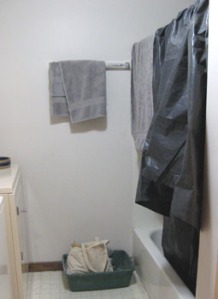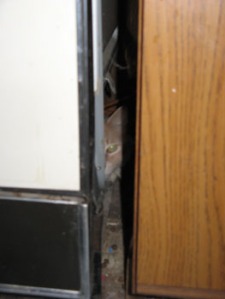Home Vegetable Gardening by F.F. Rockwell (original copyright 1911) is a rare gem that looks at how people in the U.S. gardened – and lived – about 100 years ago. It is priceless Americana that shows how far we have come socially and environmentally (the poisons that were commonly used back then make me shudder – most of them are banned for use as pesticides and herbicides in the U.S. today, thank God) at the same time how some things remain the same. (The author writes in the preface about how having a backyard garden is a great antidote to “high prices” – at a time when a loaf of bread cost about a nickel.
The following excerpt about choosing just the right spot for your new garden is as relevant today – except for the part about making sure it is a suitable location for a horse-drawn plow to be able to turn around – as when it was written in 1911.
Home Vegetable Gardening is a public domain book, meaning that nobody owns a U.S. copyright. I thought it might be fun to post occasional excerpts from the book here, starting with chapter 1. I’d love to know what you think!
**********************
Home Vegetable Gardening
F.F. Rockwell
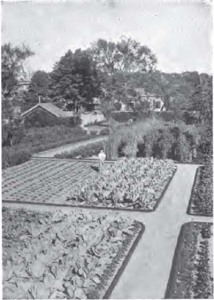
Home Vegetable Gardening Inside Front Cover
CHAPTER II
Requisites of the Home Vegetable Garden
In deciding upon the site for the home vegetable garden it is well to dispose once and for all of the old idea that the garden “patch” must be an ugly spot in the home surroundings. If thoughtfully planned, carefully planted and thoroughly cared for, it may be made a beautiful and harmonious feature of the general scheme, lending a touch of comfortable homeliness that no shrubs, borders, or beds can ever produce.
With this fact in mind we will not feel restricted to any part of the premises merely because it is out of sight behind the barn or garage. In the average moderate-sized place there will not be much choice as to land. It will be necessary to take what is to be had and then do the very best that can be done with it. But there will probably be a good deal of choice as to, first, exposure, and second, convenience. Other things being equal, select a spot near at hand, easy of access. It may seem that a difference of only a few hundred yards will mean nothing, but if one is depending largely upon spare moments for working in and for watching the garden—and in the growing of many vegetables the latter is almost as important as the former—this matter of convenient access will be of much greater importance than is likely to be at first recognized. Not until you have had to make a dozen time-wasting trips for forgotten seeds or tools, or gotten your feet soaking wet by going out through the dew-drenched grass, will you realize fully what this may mean.
EXPOSURE
But the thing of first importance to consider in picking out the spot that is to yield you happiness and delicious vegetables all summer, or even for many years, is the exposure. Pick out the “earliest” spot you can find—a plot sloping a little to the south or east, that seems to catch sunshine early and hold it late, and that seems to be out of the direct path of the chilling north and northeast winds. If a building, or even an old fence, protects it from this direction, your garden will be helped along wonderfully, for an early start is a great big factor toward success. If it is not already protected, a board fence, or a hedge of some low-growing shrubs or young evergreens, will add very greatly to its usefulness. The importance of having such a protection or shelter is altogether underestimated by the amateur.
THE SOIL
The chances are that you will not find a spot of ideal garden soil ready for use anywhere upon your place. But all except the very worst of soils can be brought up to a very high degree of productiveness—especially such small areas as home vegetable gardens require. Large tracts of soil that are almost pure sand, and others so heavy and mucky that for centuries they lay uncultivated, have frequently been brought, in the course of only a few years, to where they yield annually tremendous crops on a commercial basis. So do not be discouraged about your soil. Proper treatment of it is much more important, and a gardenpatch of average run-down—or “never-brought-up” soil—will produce much more for the energetic and careful gardener than the richest spot will grow under average methods of cultivation.
The ideal garden soil is a “rich, sandy loam.” And the fact cannot be overemphasized that such soils usually are made, not found. Let us analyze that description a bit, for right here we come to the first of the four all-important factors of gardening—food. The others are cultivation, moisture and temperature. “Rich” in the gardener’s vocabulary means full of plant food; more than that—and this is a point of vital importance—it means full of plant food ready to be used at once, all prepared and spread out on the garden table, or rather in it, where growing things can at once make use of it; or what we term, in one word, “available” plant food. Practically no soils in long- inhabited communities remain naturally rich enough to produce big crops. They are made rich, or kept rich, in two ways; first, by cultivation, which helps to change the raw plant food stored in the soil into available forms; and second, by manuring or adding plant food to the soil from outside sources.
“Sandy” in the sense here used, means a soil containing enough particles of sand so that water will pass through it without leaving it pasty and sticky a few days after a rain; “light” enough, as it is called, so that a handful, under ordinary conditions, will crumble and fall apart readily after being pressed in the hand. It is not necessary that the soil be sandy in appearance, but it should be friable.
“Loam: a rich, friable soil,” says Webster. That hardly covers it, but it does describe it. It is soil in which the sand and clay are in proper proportions, so that neither greatly predominate, and usually dark in color, from cultivation and enrichment. Such a soil, even to the untrained eye, just naturally looks as if it would grow things. It is remarkable how quickly the whole physical appearance of a piece of well cultivated ground will change. An instance came under my notice last fall in one of my fields, where a strip containing an acre had been two years in onions, and a little piece jutting off from the middle of this had been prepared for them just one season. The rest had not received any extra manuring or cultivation. When the field was plowed up in the fall, all three sections were as distinctly noticeable as though separated by a fence. And I know that next spring’s crop of rye, before it is plowed under, will show the lines of demarcation just as plainly.
This, then, will give you an idea of a good garden soil. Perhaps in yours there will be too much sand, or too much clay. That will be a disadvantage, but one which energy and perseverance will soon overcome to a great extent—by what methods may be learned in Chapter VI.
DRAINAGE
There is, however, one other thing you must look out for in selecting your garden site, and that is drainage. Dig down eight or twelve inches after you have picked out a favorable spot, and examine the sub-soil. This is the second strata, usually of different texture and color from the rich surface soil, and harder than it. If you find a sandy or gravelly bed, no matter how yellow and poor it looks, you have chosen the right spot. But if it be a stiff, heavy clay, especially a blue clay, you will have either to drain it or be content with a very late garden—that is, unless you are at the top of a knoll or on a slope. Chapter VI contains further suggestions in regard to this problem.
SOIL ANTECEDENTS
There was a further reason for, mentioning that strip of onion ground. It is a very practical illustration of what last year’s handling of the soil means to this year’s garden. If you can pick out a spot, even if it is not the most desirable in other ways, that has been well enriched or cultivated for a year or two previous, take that for this year’s garden. And in the meantime have the spot on which you intend to make your permanent vegetable garden thoroughly “fitted,” and grow there this year a crop of potatoes or sweet corn, as suggested in Chapter VIII. Then next year you will have conditions just right to give your vegetables a great start.
OTHER CONSIDERATIONS
There are other things of minor importance but worth considering, such as the shape of your garden plot, for instance. The more nearly rectangular, the more convenient it will be to work and the more easily kept clean and neat. Have it large enough, or at least open on two ends, so that a horse can be used in plowing and harrowing. And if by any means you can have it within reach of an adequate supply of water, that will be a tremendous help in seasons of protracted drought. Then again, if you have ground enough, lay off two plots so that you can take advantage of the practice of rotation, alternating grass, potatoes or corn with the vegetable garden. Of course it is possible to practice crop rotation to some extent within the limits of even the small vegetable garden, but it will be much better, if possible, to rotate the entire garden-patch.
All these things, then, one has to keep in mind in picking the spot best suited for the home vegetable garden. It should be, if possible, of convenient access; it should have a warm exposure and be well enriched, well worked-up soil, not too light nor too heavy, and by all means well drained. If it has been thoroughly cultivated for a year or two previous, so much the better. If it is near a supply of water, so situated that it can be at least plowed and harrowed with a horse, and large enough to allow the garden proper to be shifted every other year or two, still more the better.
Fill all of these requirements that you can, and then by taking full advantage of the advantages you have, you can discount the disadvantages. After all it is careful, persistent work, more than natural advantages, that will tell the story; and a good garden does not grow—it is made.
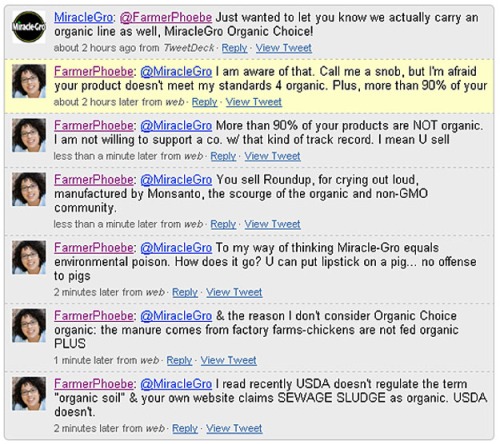

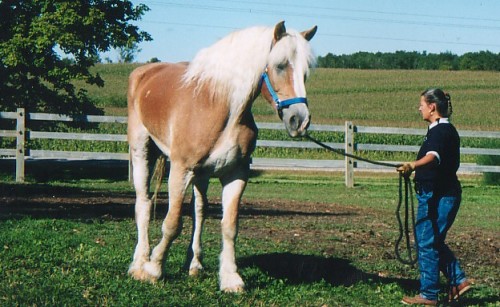
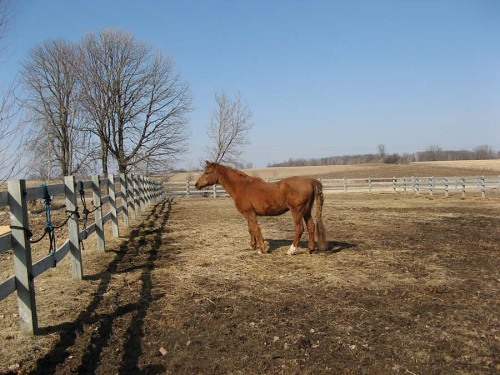
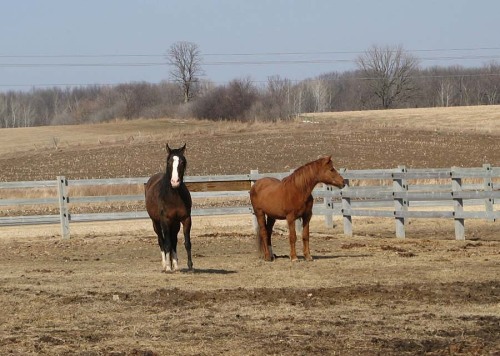
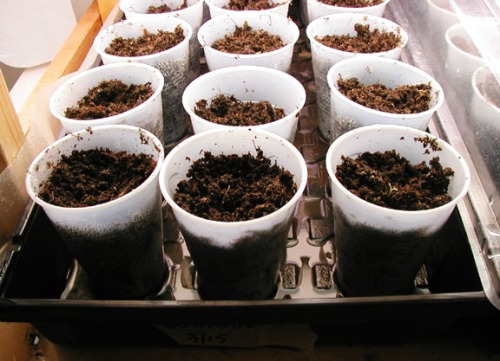

 Fluorescent lights on a 16-hour timer give off enough heat to increase the area above room temperature by 5–10 degrees—into a nearly ideal germination range. Once green starts to show, I remove the tray covers and let the seedlings keep growing until they’re too tall for the shelves. At that point, they rotate out to a different spot and something else takes over in the warm cabinet. The lights are not needed for germination. This solution won me over because of the warmth factor, and because it’s so easy to simply remove the tray covers and give the new plants their light.
Fluorescent lights on a 16-hour timer give off enough heat to increase the area above room temperature by 5–10 degrees—into a nearly ideal germination range. Once green starts to show, I remove the tray covers and let the seedlings keep growing until they’re too tall for the shelves. At that point, they rotate out to a different spot and something else takes over in the warm cabinet. The lights are not needed for germination. This solution won me over because of the warmth factor, and because it’s so easy to simply remove the tray covers and give the new plants their light.
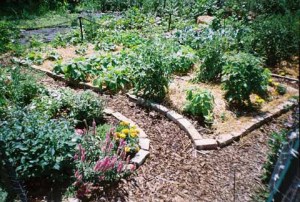
 Anybody who follows me on Twitter knows by now that I am a huge fan. If I could make a living on Twitter, I’d be tweeting my little heart out all day! Suffice it to say that I have met the most wonderfully diverse bunch of gardeners on Twitter through my
Anybody who follows me on Twitter knows by now that I am a huge fan. If I could make a living on Twitter, I’d be tweeting my little heart out all day! Suffice it to say that I have met the most wonderfully diverse bunch of gardeners on Twitter through my 

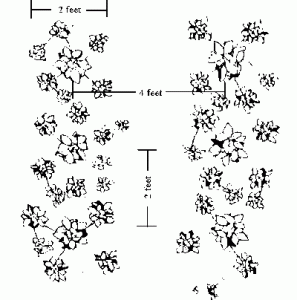
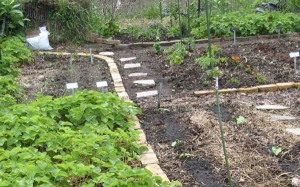





 *WARNING* Gross pictures of slimy slugs are included. Not recommended for the squeamish.
*WARNING* Gross pictures of slimy slugs are included. Not recommended for the squeamish.
